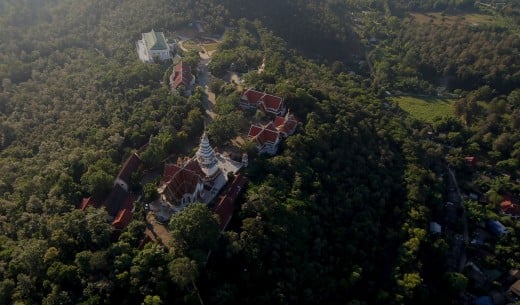Name : Doi Thepnimit temple
Location :
Doi Thepnimit is a monastic residence with a fantastic panoramic view over Patong beach. You can see its iconic white pagoda from the beach, if you know in which direction to look, of course, it’s pretty tiny. To access Doi Thepnimit is a bit tricky since the new road to reach it is precisely at the top of the notoriously dangerous Patong Hill. If you are familiar with Patong you will know right away how to spot that small road: it’s next to the Chinese temple where everyone honks three times for good luck! The way to the Chedi is now nicely paved on a couple of kilometres, and there is ample parking next to the temple.
Description :
Doi Thepnimit is a small but so beautifully decorated temple, and with such a view, it’s worth stopping on your way in or out Patong beach. The Doi Thepnimit temple is a "Samnak Song" (สำนักสงฆ์) which is more like a monastery or meditation center. These places may not have all features of a larger Wat. Doi Thepnimit has really just one large Chedi with a great view and on a lower level are buildings that look like accommodation and dining areas for Monks or people coming to study or meditate.

The Chedi (a Buddhist stupa) is ornate with colourful seven-heads Naga (a mythical serpent-like creature) and many other mythological characters. All the sculptures and carvings are exceptionally well executed, and it is a pleasure to admire the craftsmanship. Note that the pagoda area is not always opened, but you can still walk around it. The shape of the chedi is Pra Tat Pra Nom style, from the northeast part of Thailand. This Temple is impressive and very bright and colourful as it's so new! The entrance (below) is guarded by 2 Yaks (mythical giants, often seen at temples) and also by 2 Naga (7 headed mythical snakes) - Buddhist stories tell of the king of the Naga sheltering Buddha from a storm by covering him with his 7 heads, so you see the Naga in pretty much all Buddhist temples too.
Just remember to dress and behave appropriately as this is a religious place and you will frequently see monks and nuns meditating or sweeping the surrounding of the temples.
There is another temple called Wat Thepnimit located between Phuket Town and Chalong. Just make sure you mark the right one when using Google map
Websites :












